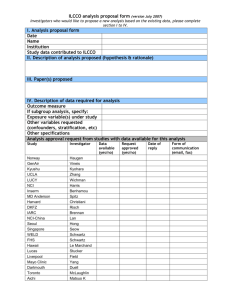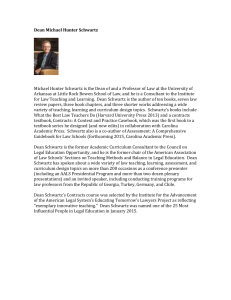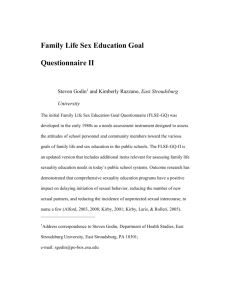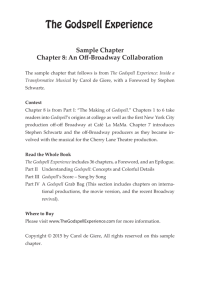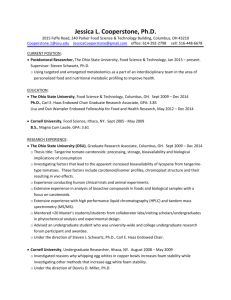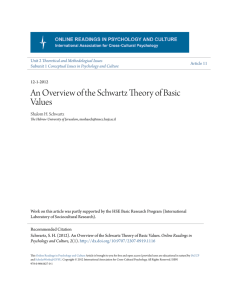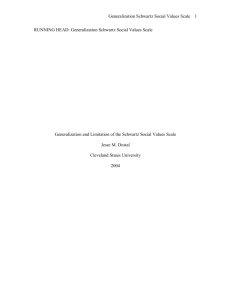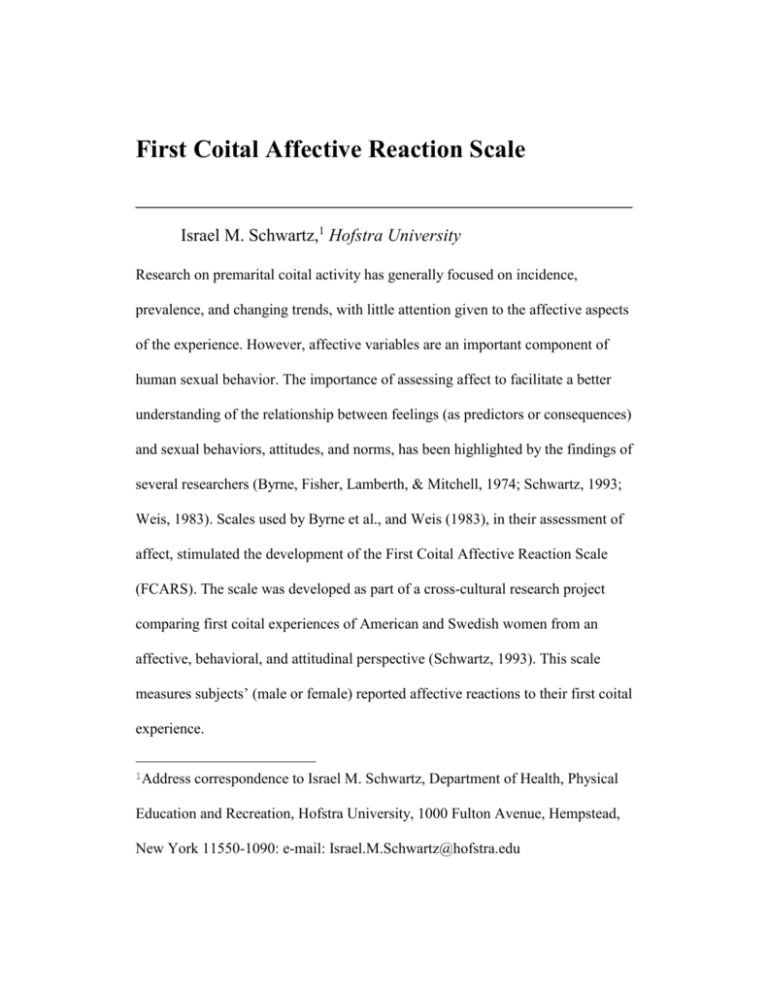
First Coital Affective Reaction Scale
__________________________________________________________________
Israel M. Schwartz,1 Hofstra University
Research on premarital coital activity has generally focused on incidence,
prevalence, and changing trends, with little attention given to the affective aspects
of the experience. However, affective variables are an important component of
human sexual behavior. The importance of assessing affect to facilitate a better
understanding of the relationship between feelings (as predictors or consequences)
and sexual behaviors, attitudes, and norms, has been highlighted by the findings of
several researchers (Byrne, Fisher, Lamberth, & Mitchell, 1974; Schwartz, 1993;
Weis, 1983). Scales used by Byrne et al., and Weis (1983), in their assessment of
affect, stimulated the development of the First Coital Affective Reaction Scale
(FCARS). The scale was developed as part of a cross-cultural research project
comparing first coital experiences of American and Swedish women from an
affective, behavioral, and attitudinal perspective (Schwartz, 1993). This scale
measures subjects’ (male or female) reported affective reactions to their first coital
experience.
1Address
correspondence to Israel M. Schwartz, Department of Health, Physical
Education and Recreation, Hofstra University, 1000 Fulton Avenue, Hempstead,
New York 11550-1090: e-mail: Israel.M.Schwartz@hofstra.edu
Description
The FCARS consists of 13 bipolar items, using a 7-point Likert format for the
measurement of each item. Respondents answering yes to the question "Have you
ever had sexual intercourse (defined as penile-vaginal penetration)?" are asked to
indicate the degree to which they had experienced the following feelings in
reaction to their first coitus at the time that it occurred: confused, satisfied,
anxious, guilty, romantic, pleasure, sorry, relieved, exploited, happy, embarrassed,
excited, and fearful. The responses range from 1 (representing not experiencing
the feeling at all) to 7 (representing strongly experiencing the feeling), with the
numbers in between representing various gradations between these extremes. (To
protect anonymity, two versions of the scale are provided to respondents. The
respondents who have never engaged in sexual intercourse can complete a version
asking about how they think they would feel during their first sexual intercourse.
Thus far, only the version for coitally experienced participants has been used for
analysis).
In a cross-cultural study, the scale, included in a self-report anonymous
questionnaire focusing on coital initiation and the circumstances surrounding the
event, was administered to a sample of 217 female undergraduates drawn from
institutions in the northeast, southeast, mideastern, and western regions of the
United States (Schwartz, 1993). As part of the same study, the scale was
administered to a sample of 186 female undergraduates from institutions in the
northern, middle, and southern regions of Sweden. The entire questionnaire,
including the FCARS, was translated into Swedish. A complete description of the
translation procedure is provided in Schwartz's article.
Additional material pertaining to this scale, including information about
format, scoring, reliability, and validity is available in Fisher, Davis, Yarber, and
Davis (2010).
Fisher, T. D., Davis, C. M., Yarber, W. L., & Davis, S. L. (2010). Handbook of
Sexuality-Related Measures. New York: Routledge.

